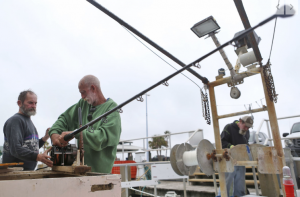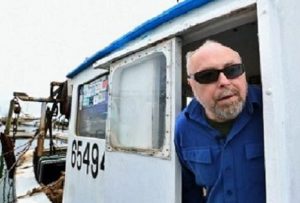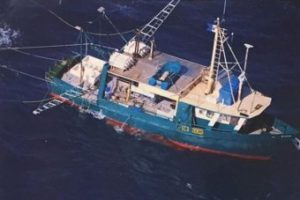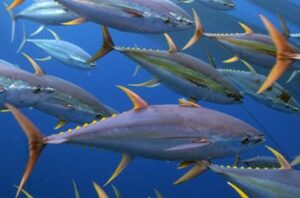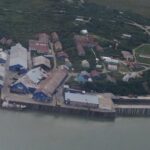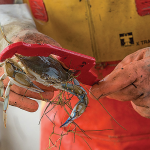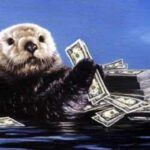Daily Archives: March 16, 2017
Fears for prawn industry grow after white spot found in Moreton Bay
 The ban on movement of uncooked prawns and crustaceans outside a new control zone could lead to cheaper seafood for south-east Queenslanders. Uncooked products will not be allowed to leave the area, which includes Brisbane, the Gold Coast and Moreton Bay, but they can be sold within the area. The movement order, effective immediately, includes crabs, prawns, yabbies, Moreton Bay bugs and marine worms. It comes after positive test results on several properties in the Logan River. Agriculture Minister Bill Byrne briefed prawn farmers, commercial fishers and others in the industry on Thursday morning, but some trawlers are still at sea and will need to be spoken to when they return. The prawns were caught within the past week at the Redcliffe Peninsula and Deception Bay, with 31 testing positive. continue reading the story here 21:52
The ban on movement of uncooked prawns and crustaceans outside a new control zone could lead to cheaper seafood for south-east Queenslanders. Uncooked products will not be allowed to leave the area, which includes Brisbane, the Gold Coast and Moreton Bay, but they can be sold within the area. The movement order, effective immediately, includes crabs, prawns, yabbies, Moreton Bay bugs and marine worms. It comes after positive test results on several properties in the Logan River. Agriculture Minister Bill Byrne briefed prawn farmers, commercial fishers and others in the industry on Thursday morning, but some trawlers are still at sea and will need to be spoken to when they return. The prawns were caught within the past week at the Redcliffe Peninsula and Deception Bay, with 31 testing positive. continue reading the story here 21:52
East Naples boat captain accused of smuggling immigrants in Florida Keys
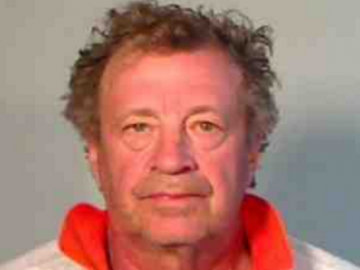 An East Naples charter boat captain arrested Sunday off the Florida Keys faces human smuggling charges. Federal agents said they found 11 people from three Caribbean countries below deck on his boat. None of the 11 were U.S. citizens, agents said. U.S. Customs and Border Protection air and marine officers said they were on patrol in Tavernier Creek about 3 p.m. Sunday when they came across Richard Karl Mork’s disabled boat and two personal watercraft approaching the boat with two gas cans. Officers boarded the boat about 3:30 p.m. and found 11 passengers, including two unaccompanied minors, below deck, according to a criminal complaint filed by the Homeland Security Department in U.S. District Court for the Southern District of Florida. The vessel, named “Scout,” was found about 2 nautical miles from Tavernier, south of Key Largo. Read the story here 21:15
An East Naples charter boat captain arrested Sunday off the Florida Keys faces human smuggling charges. Federal agents said they found 11 people from three Caribbean countries below deck on his boat. None of the 11 were U.S. citizens, agents said. U.S. Customs and Border Protection air and marine officers said they were on patrol in Tavernier Creek about 3 p.m. Sunday when they came across Richard Karl Mork’s disabled boat and two personal watercraft approaching the boat with two gas cans. Officers boarded the boat about 3:30 p.m. and found 11 passengers, including two unaccompanied minors, below deck, according to a criminal complaint filed by the Homeland Security Department in U.S. District Court for the Southern District of Florida. The vessel, named “Scout,” was found about 2 nautical miles from Tavernier, south of Key Largo. Read the story here 21:15
Man vs. mammal, commercial herring fisherman films sea lion feeding frenzy
 It’s the age old fight over who gets the fish, man or sea lion. For commercial fisherman Allan Marsden, he’s fed up with the burgeoning sea lion population along the B.C. coast impeding his ability to do his job. Roe herring are fished for their eggs and the fishery takes place as the herring gather to spawn. The window is short — late February to early March — for fishermen to make their quota and Marsden says this year they were unable to make their targets. Marsden puts a lot of the onus on the sea lions. “The sea lions keep the herring down so we can’t get at them. They just make it virtually impossible to put the gear in the water sometimes,” Marsden explains. Video, read the story here 19:05
It’s the age old fight over who gets the fish, man or sea lion. For commercial fisherman Allan Marsden, he’s fed up with the burgeoning sea lion population along the B.C. coast impeding his ability to do his job. Roe herring are fished for their eggs and the fishery takes place as the herring gather to spawn. The window is short — late February to early March — for fishermen to make their quota and Marsden says this year they were unable to make their targets. Marsden puts a lot of the onus on the sea lions. “The sea lions keep the herring down so we can’t get at them. They just make it virtually impossible to put the gear in the water sometimes,” Marsden explains. Video, read the story here 19:05

Proposals Aim To Restore Lobsters To Long Island Sound
A new interstate plan is being considered to try and halt the dramatic decline in lobster populations in Long Island Sound and southern New England waters, but experts warn none of these proposals may work in the face of global warming. The draft plan by the Atlantic States Marine Fisheries Commission includes possible changes in the size of lobsters allowed to be kept, reductions in the number of lobster traps allowed in the region, and additional lobster season closures. But a former president of the Connecticut Commercial Lobstermen’s Association, Nick Crismale of Branford, doubts the once-thriving lobster population in the Sound will ever recover. Increasingly warm waters in the Sound may have also resulted in an increase in fish species that prey on lobsters, like black sea bass, making any recovery more difficult, experts say. A number of Connecticut lobstermen believe the population plunge was triggered by the use of certain pesticides to kill mosquitoes carrying the West Nile Virus. Read the story here 15:21
GARFO: At-Sea Monitoring 2017 Coverage Levels for Groundfish Sector Fishery
 NOAA Fisheries announces that for fishing year 2017 the total target at-sea monitoring coverage level is 16 percent of all groundfish sector trips. This target coverage level is a 2 percentage point increase from the 2016 coverage level (14 percent). As the target coverage level is set based on an average of at-sea monitoring data from the past 3 full groundfish fishing years, this level is set based on data from the 2013-2015 fishing years. Federally funded observer coverage provided by the Northeast Fishery Observer Program to meet the Standardized Bycatch Reporting Methodology (SBRM) requirements will partially satisfy the 16 percent coverage requirement. Sectors will therefore actually pay for at-sea monitoring coverage on less than 16 percent of their groundfish trips, but the total will depend on the SBRM coverage rates, which are not yet out. Read the press release here, For more information, please read the Summary of Analysis Conducted to Determine At-Sea Monitoring Requirements for Multispecies Sectors FY2017 13:59
NOAA Fisheries announces that for fishing year 2017 the total target at-sea monitoring coverage level is 16 percent of all groundfish sector trips. This target coverage level is a 2 percentage point increase from the 2016 coverage level (14 percent). As the target coverage level is set based on an average of at-sea monitoring data from the past 3 full groundfish fishing years, this level is set based on data from the 2013-2015 fishing years. Federally funded observer coverage provided by the Northeast Fishery Observer Program to meet the Standardized Bycatch Reporting Methodology (SBRM) requirements will partially satisfy the 16 percent coverage requirement. Sectors will therefore actually pay for at-sea monitoring coverage on less than 16 percent of their groundfish trips, but the total will depend on the SBRM coverage rates, which are not yet out. Read the press release here, For more information, please read the Summary of Analysis Conducted to Determine At-Sea Monitoring Requirements for Multispecies Sectors FY2017 13:59
‘Codfather’ fraud plea hearing pushed back to end of the month
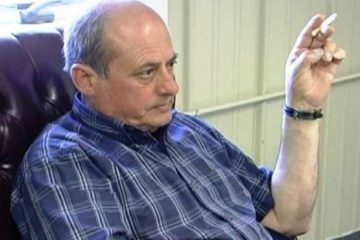 The hearing where a New Bedford fishing magnate is expected to plead guilty to federal fraud charges has been pushed back. The U.S. Attorney’s Office had originally announced the hearing for Carlos Rafael would be held on March 16, but Wednesday, the day before that hearing would have been, they announced it was rescheduled for March 30 at 2:30 p.m. Rafael is accused of lying to federal authorities for years about the quantity and species of fish his boats caught in order to evade federal fishing quotas — claiming it was all haddock, instead of other species that have stricter quotas. Video link 12:34
The hearing where a New Bedford fishing magnate is expected to plead guilty to federal fraud charges has been pushed back. The U.S. Attorney’s Office had originally announced the hearing for Carlos Rafael would be held on March 16, but Wednesday, the day before that hearing would have been, they announced it was rescheduled for March 30 at 2:30 p.m. Rafael is accused of lying to federal authorities for years about the quantity and species of fish his boats caught in order to evade federal fishing quotas — claiming it was all haddock, instead of other species that have stricter quotas. Video link 12:34
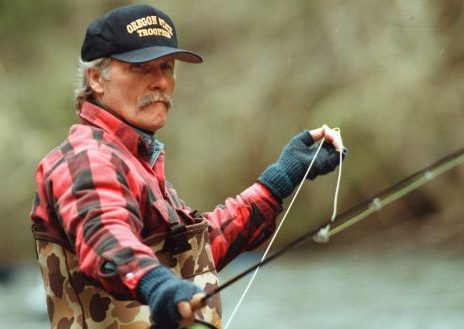
Op-Ed: Kitzhaber salmon policy failed to meet its goals – Ryan Rogers, owner of the Fisherman’s Market
Not all Oregonians are financially or physically able to take time away from work and family to catch their own Columbia River salmon. That’s where I come in: I sell Oregon’s signature fish to my customers, and they love it. My supply of salmon comes from the commercial fishing families who fish the Columbia. Some of them have been doing so for generations. However, their future — and Oregon consumers’ future supply of Columbia River salmon — is now at risk. Some politicians and special interest groups are attacking the Oregon Fish & Wildlife Commission for following fish science and Oregon law and, basically, doing its job. At its January meeting, the commission modified Gov. John Kitzhaber’s 2012 Columbia River plan. The sport-fishing interests are upset. Now, this isn’t a (fish) story about fish decline. And it’s not a story about fish conservation. Read the op-ed here 12:05
White House budget head: Reported Coast Guard cuts ‘not accurate’
 President Trump’s budget director is insisting that a report that $1.3 billion would be cut from the Coast Guard’s budget is inaccurate, although the administration’s first spending outline does not include the data to back up the claim. The budget blueprint released early Thursday details a $54 billion bump in defense spending and a 6.8 percent increase for the Department of Homeland Security, which the Coast Guard falls under. Nowhere in the budget, however, is a mention of Coast Guard spending, which was initially identified by the White House as a way to partially fund an illegal immigration crackdown and border security. Trump’s budget director, Mick Mulvaney, told reporters on Wednesday that the reported cuts are “not accurate.” He pointed to the overall increase for DHS in the outline, and said its secretary, John Kelly, is allowed to allocate the money as he sees fit. Read the story here 11:36
President Trump’s budget director is insisting that a report that $1.3 billion would be cut from the Coast Guard’s budget is inaccurate, although the administration’s first spending outline does not include the data to back up the claim. The budget blueprint released early Thursday details a $54 billion bump in defense spending and a 6.8 percent increase for the Department of Homeland Security, which the Coast Guard falls under. Nowhere in the budget, however, is a mention of Coast Guard spending, which was initially identified by the White House as a way to partially fund an illegal immigration crackdown and border security. Trump’s budget director, Mick Mulvaney, told reporters on Wednesday that the reported cuts are “not accurate.” He pointed to the overall increase for DHS in the outline, and said its secretary, John Kelly, is allowed to allocate the money as he sees fit. Read the story here 11:36
New research at Aberdeen University has highlighted the potential size of the prize awaiting Scots fishers after Brexit
 The study looked at 17 commercially key Scottish fish stocks, focusing not on how big they were, but on their distribution. Comparisons were made between the percentages of fish largely contained within the UK’s exclusive economic zone (EEZ), out to 200 nautical miles, and quota allocations. For all but three of the species studied, current UK quotas are significantly below stock levels within the EEZ. And according to Scottish Fishermen’s Federation chief executive , these results strengthen the case for the UK seizing control over its territorial waters after Brexit. “It’s not fair and it’s not right,” Mr Armstrong said at a recent meeting of the North East Scotland Fisheries Development Partnership in Aberdeen. He argued Scottish fishers were at a disadvantage under the current EU arrangements and added: “This is not a land grab or an act of aggression – these are our waters. continue reading the article here 11:00
The study looked at 17 commercially key Scottish fish stocks, focusing not on how big they were, but on their distribution. Comparisons were made between the percentages of fish largely contained within the UK’s exclusive economic zone (EEZ), out to 200 nautical miles, and quota allocations. For all but three of the species studied, current UK quotas are significantly below stock levels within the EEZ. And according to Scottish Fishermen’s Federation chief executive , these results strengthen the case for the UK seizing control over its territorial waters after Brexit. “It’s not fair and it’s not right,” Mr Armstrong said at a recent meeting of the North East Scotland Fisheries Development Partnership in Aberdeen. He argued Scottish fishers were at a disadvantage under the current EU arrangements and added: “This is not a land grab or an act of aggression – these are our waters. continue reading the article here 11:00
INVITATION: RI Seafood Strategy Meeting
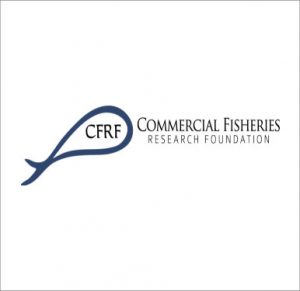 YOU ARE INVITED! RI Food Strategy: Fisheries & Seafood Session Thursday, March 23rd, 2-3PM Commercial Fisheries Research Foundation Commercial Fisheries Center, Building #61B URI East Farm Campus, Kingston, RI This event will provide an opportunity for fisheries/seafood stakeholders to learn about and provide feedback on a draft of the RI Food Strategy. The RI Director of Food Strategy, Sue AnderBois, will present an overview of the Rhode Island Food Strategy, focusing on the fisheries and seafood components. This RI Food Strategy is a five-year action plan that envisions a sustainable, equitable food system that builds upon traditions, strengths, and history while encouraging innovation and supporting the regional goal of 50% of the food eaten in New England be produced in the region by 2060. The Executive Summary (attached) and full draft of the RI Food Strategy are available at: www.relishrhody.com. Please RSVP to Anna Malek Mercer at amalek@cfrfoundation.org. We look forward to seeing you there! Click here -The Commercial Fisheries Research Foundation www.cfrfoundation.org 10:20
YOU ARE INVITED! RI Food Strategy: Fisheries & Seafood Session Thursday, March 23rd, 2-3PM Commercial Fisheries Research Foundation Commercial Fisheries Center, Building #61B URI East Farm Campus, Kingston, RI This event will provide an opportunity for fisheries/seafood stakeholders to learn about and provide feedback on a draft of the RI Food Strategy. The RI Director of Food Strategy, Sue AnderBois, will present an overview of the Rhode Island Food Strategy, focusing on the fisheries and seafood components. This RI Food Strategy is a five-year action plan that envisions a sustainable, equitable food system that builds upon traditions, strengths, and history while encouraging innovation and supporting the regional goal of 50% of the food eaten in New England be produced in the region by 2060. The Executive Summary (attached) and full draft of the RI Food Strategy are available at: www.relishrhody.com. Please RSVP to Anna Malek Mercer at amalek@cfrfoundation.org. We look forward to seeing you there! Click here -The Commercial Fisheries Research Foundation www.cfrfoundation.org 10:20
The production value of Newfoundland and Labrador’s seafood industry reached another record high in 2016.
 It totalled over $1.4 billion last year, an increase of 8.9 per cent over 2015. Fisheries and Land Resources Minister Steve Crocker announced the release of the 2016 Seafood Industry Year in Review today in the House of Assembly, ahead of his trip to Boston with Premier Dwight Ball for Seafood Expo North America 2017 on Sunday. “We will be accompanying our world-class seafood marketing team and the Newfoundland and Labrador delegation to join the 1,200 companies, and over 21,000 buyers, suppliers, media and other seafood professionals at North America’s largest seafood trade event,” Crocker said. Other highlights of the report include: aquaculture production, employment, value of landings, shellfish, lobster, groundfish, seal hunt, Read the article here, and click here for the full report 08:56
It totalled over $1.4 billion last year, an increase of 8.9 per cent over 2015. Fisheries and Land Resources Minister Steve Crocker announced the release of the 2016 Seafood Industry Year in Review today in the House of Assembly, ahead of his trip to Boston with Premier Dwight Ball for Seafood Expo North America 2017 on Sunday. “We will be accompanying our world-class seafood marketing team and the Newfoundland and Labrador delegation to join the 1,200 companies, and over 21,000 buyers, suppliers, media and other seafood professionals at North America’s largest seafood trade event,” Crocker said. Other highlights of the report include: aquaculture production, employment, value of landings, shellfish, lobster, groundfish, seal hunt, Read the article here, and click here for the full report 08:56


































